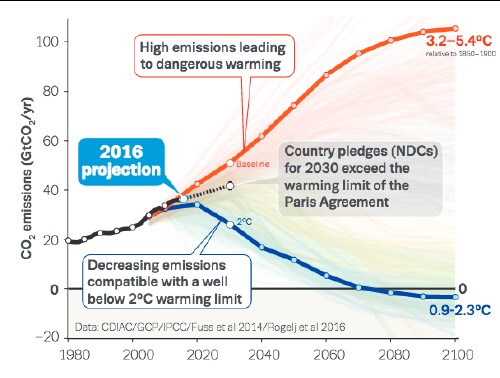
The y-axis is for CO2 emissions; divide by 3.67 to get carbon emissions.
L. David Roper, http://www.roperld.com/personal/roperldavid.htm
02-Apr-2017
For year 2015 9.9 x 109 tonnes of carbon were emitted into the earth's atmosphere:
In order to keep the earth's average temperature 2°C below pre-industrial temperature, the blue curve for global emissions in the graph below must apply:

The y-axis is for CO2 emissions; divide by 3.67 to get carbon emissions.
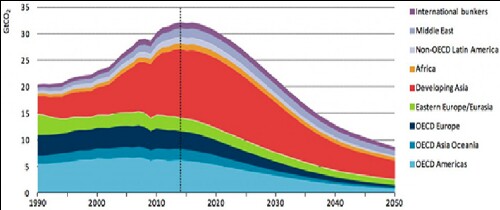
This graph shows CO2 emissions reduction for countries.
The blue stars in the following three graphs show when, year 2070, the global coal, crude-oil and natural-gas extractions have to go to near zero if all three are treated equally. (The future peaks are calculated using estimated reserves of the three fossil fuels.)
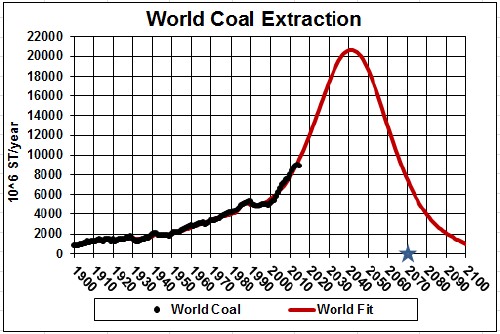 Since the approach to zero needs to start immediately, it can be accomplished for coal by greatly decreasing the recoverable reserves, leaving most current reserves as "stranded reserves" or "unburnable carbon". |
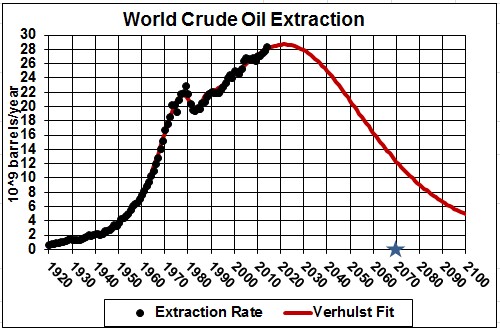 Since the approach to zero needs to start immediately, it can be accomplished for crude oil by increasing the downward slope, leaving some "stranded reserves". |
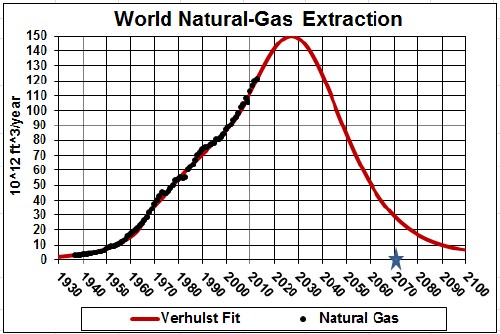 Since the approach to zero needs to start immediately, it can be accomplished for natural gas by peaking a decade sooner than shown and increasing the downward slope. This would reduce the recoverable reserves by a sizeable fraction, "stranded reserves". |
The blue cuve in the following graph is an estimate of the CO2 emissions if all of the fossil-fuels' extraction shown in the three graphs above are burned for energy:
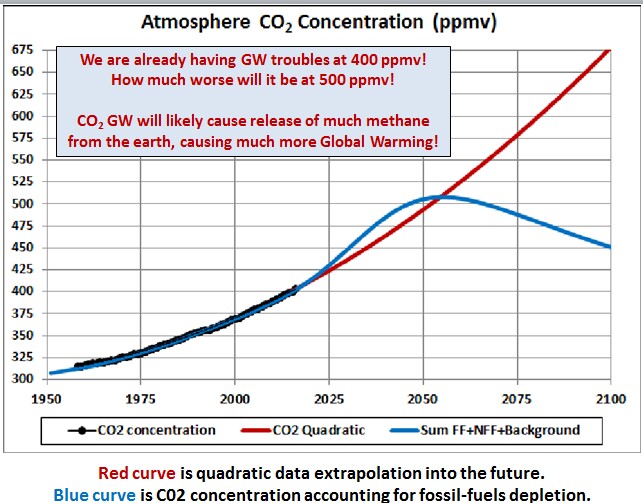
The world needs to reduce the extraction of fossil fuels to mitigate global warming.
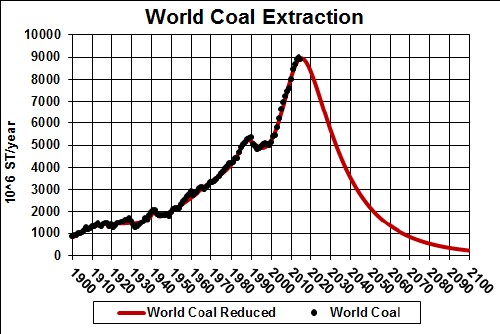 This curve reduces the recoverable reserves from 9.7 x 1011 ST to 2.2 x 1011 ST, causing stranded coal reserves of 7.5 x 1011 ST. This curve reduces the recoverable reserves from 9.7 x 1011 ST to 2.2 x 1011 ST, causing stranded coal reserves of 7.5 x 1011 ST.
|
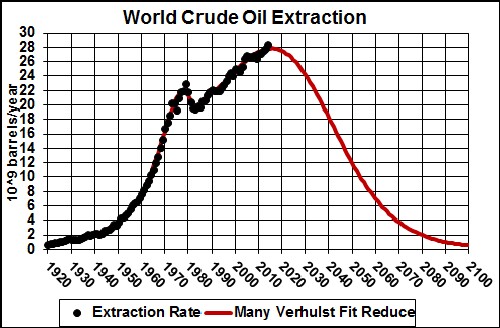 This curve reduces the recoverable reserves from 1.75 x 1012 barrels to 1.00 x 1012 barrels, causing stranded crude-oil reserves of 0.75 x 1012 barrels . This curve reduces the recoverable reserves from 1.75 x 1012 barrels to 1.00 x 1012 barrels, causing stranded crude-oil reserves of 0.75 x 1012 barrels . |
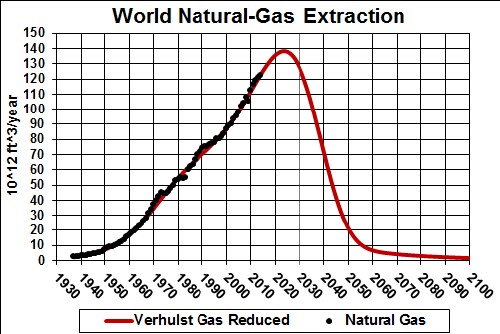 It may be ok to not reduce the extraction as shown here if fugitive emissions are greatly reduced. |
The dominant effect of these three reductions would be due to coal reduction: The coal peak is lowered from 20,000 x 109 ST/year to 9,000 x 109 ST/year, about one-half reduction, and its location reduced from year 2040 to 2015. With these reductions, especially for coal, CO2 emissions would probably peak at ~425 ppmv at ~2030 and then gradually decline. This assumes that methane release from Arctic tundra and methane clathrates on continental shelves do not become great!